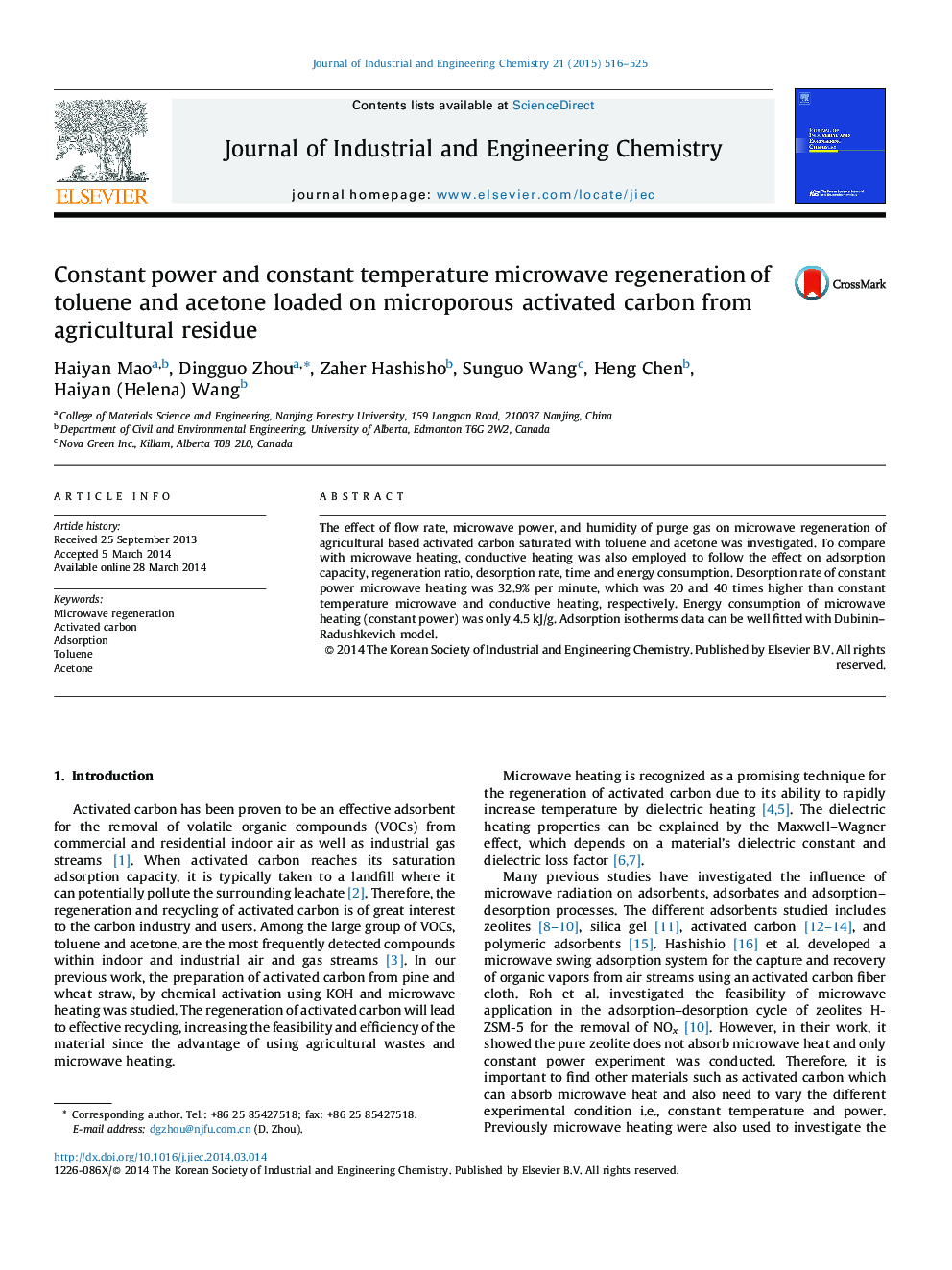| Article ID | Journal | Published Year | Pages | File Type |
|---|---|---|---|---|
| 226946 | Journal of Industrial and Engineering Chemistry | 2015 | 10 Pages |
•Toluene and acetone saturated activated carbons were regenerated by microwave.•The effect of microwave heating conditions on regeneration ratio was investigated.•Microwave heating with constant power got the highest desorption rate.•Microwave heating requires less energy consumption than that of conventional ways.•Adsorption isotherms data can be well fitted with Dubinin–Radushkevich model.
The effect of flow rate, microwave power, and humidity of purge gas on microwave regeneration of agricultural based activated carbon saturated with toluene and acetone was investigated. To compare with microwave heating, conductive heating was also employed to follow the effect on adsorption capacity, regeneration ratio, desorption rate, time and energy consumption. Desorption rate of constant power microwave heating was 32.9% per minute, which was 20 and 40 times higher than constant temperature microwave and conductive heating, respectively. Energy consumption of microwave heating (constant power) was only 4.5 kJ/g. Adsorption isotherms data can be well fitted with Dubinin–Radushkevich model.
